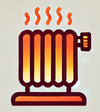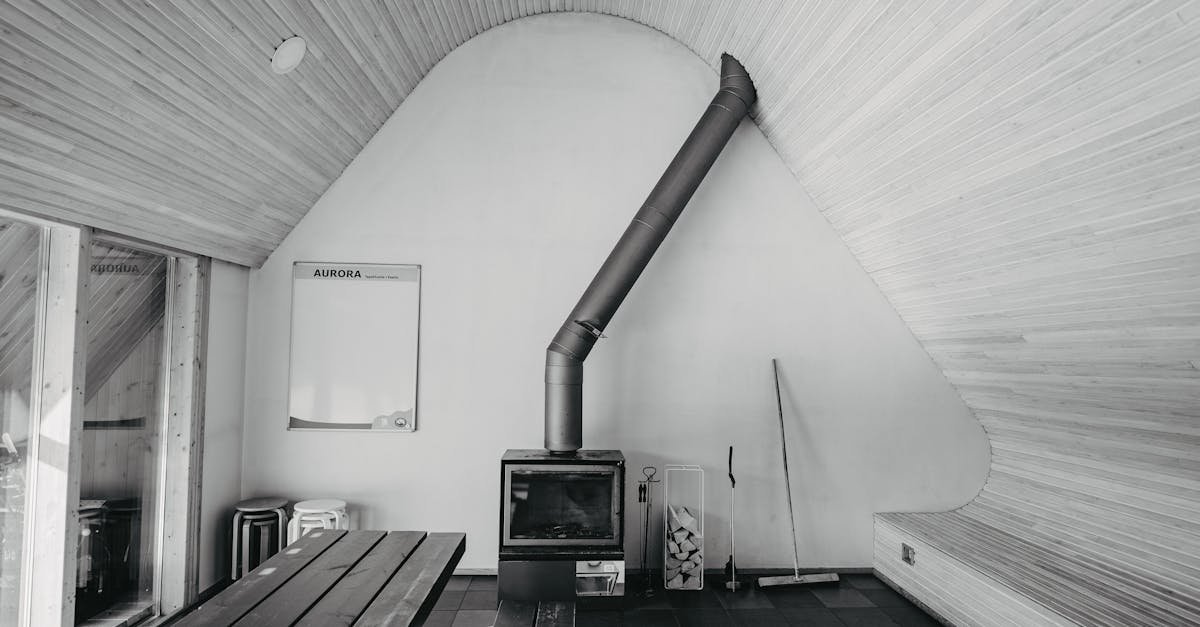A heater coil deep clean is essential for maintaining your heating system’s efficiency and prolonging its lifespan. Over time, dust and debris accumulate on the coils, reducing heat transfer and increasing energy costs. Regular cleaning not only enhances performance but also helps prevent potential breakdowns.
To deep clean your heater coils, start by turning off the power to the unit. Remove any accessible debris with a vacuum or soft brush. Then, use a coil cleaner to eliminate stubborn grime. Rinsing the coils thoroughly ensures optimal airflow and efficiency. By keeping your heater coils clean, you’ll enjoy a warmer home and lower utility bills.
Importance Of Heater Coil Deep Clean
Deep cleaning heater coils is essential for optimal HVAC system performance. When coils accumulate dirt and debris, they act as insulators. This insulation hinders heat transfer. It forces your HVAC system to work harder and consume more energy. The EPA indicates that dirty coils can increase energy consumption by up to 37% in air conditioning systems. Heating systems face similar challenges.
Maintaining clean coils enhances system performance. Clogged coils reduce the cooling or heating power and deliver lukewarm air. This inconsistency leads to discomfort in your space. Regular cleaning restores heat transfer efficiency and ensures consistent temperatures.
Investing time in heater coil deep cleaning prevents breakdowns. A clean system operates effectively, prolonging its lifespan. You benefit from fewer repairs and improved utility bills. Prioritizing coil maintenance ensures your home stays warm and comfortable.
Benefits Of Regular Maintenance
Regular maintenance of heater coils provides significant benefits. Not only does it enhance performance, but it also ensures comfort and efficiency in your home.
Improved Efficiency
Regular cleaning of heater coils boosts system efficiency. Clean coils operate smoothly, using less energy. When coils accumulate dirt and debris, the system must work longer to reach your desired temperature. This increased effort raises your energy bills. According to the EPA, dirty coils can increase energy consumption by up to 37% in air conditioning systems. By keeping your coils clean, your system can maintain normal cycles and reduce energy costs.
Extended Lifespan
Regular maintenance also extends the lifespan of your HVAC system. A well-maintained system encounters fewer breakdowns and lasts longer. Dirty coils can lead to unnecessary wear and tear, impacting the heater’s functionality. When you clean the coils consistently, you prevent stress on the system. This results in fewer repairs and a longer service life. Investing in regular maintenance allows you to enjoy a reliable heating system for years to come.
How To Perform A Heater Coil Deep Clean
Cleaning heater coils improves efficiency and reduces energy costs. Follow these steps for an effective deep clean.
Tools And Materials Needed
- Steam Cleaning Equipment: Choose steam cleaning equipment for its effectiveness. Steam heated to 350°F at 350 psi penetrates deeply into coils.
- Pump-Up Sprayer or Water Hose: Use a sprayer or hose to apply liquid cleaners. Handle carefully to avoid contact with electrical components.
- Liquid Laundry Detergent or Coil Cleaner: Opt for non-acid or self-rinsing cleaners. These options prevent corrosion.
- Wire Brush or Stiff Bristled Toilet Brush: Use a wire brush to remove surface dirt and debris effectively.
- Flashlight and Hand Mirror: Inspect fin spaces with a flashlight and mirror. This helps identify embedded dirt that requires removal.
- Turn Off Power: Safety first. Disconnect power to the heating system before starting.
- Clear Debris: Remove any dust and debris from the coils. Use a wire brush if necessary to ensure thorough cleaning.
- Apply Cleaner: Spray the coils with your chosen liquid laundry detergent or coil cleaner. Ensure even coverage across all surfaces.
- Allow to Sit: Let the cleaner sit for the recommended time. This allows it to break down stubborn dirt and grime.
- Rinse Thoroughly: Rinse the coils with clean water. Ensure all cleaner residues are washed away to prevent corrosion.
- Inspect Coils: After rinsing, check the coils with your flashlight and mirror. Confirm that all dirt is removed and coils are clean.
- Reconnect Power: Once everything is dry and clean, restore power to the heating system.
By following these steps, you maintain efficient heating and prevent future buildup that can affect performance.
Signs That Your Heater Coils Need Cleaning
- Increased Energy Consumption: If your energy bills are rising, dirty coils might be the cause. The EPA reports that dirty coils can increase energy consumption by up to 37% in air conditioning systems. This increase applies to heating systems too, indicating that clean coils are essential for energy efficiency.
- Reduced System Performance: Notice that your system struggles to maintain warm temperatures? Clogged coils prevent effective heat transfer. When dust and debris accumulate, the system operates inefficiently. This inefficiency leads to discomfort in your home.
- Increased Maintenance Costs: Skipping coil cleaning can raise future repair costs. Clogged coils can cause premature failures in HVAC components like compressors. More breakdowns mean more bills, making regular cleaning a smart financial choice.
Common Mistakes To Avoid
Deep cleaning heater coils requires attention to detail. Avoid these common mistakes to ensure an effective and safe process.
Using Improper Cleaning Solutions
Don’t use household detergents. These can corrode metals like aluminum and copper found in your coils. Instead, choose coil cleaners specifically formulated for HVAC systems. These cleaners maintain the appropriate pH levels, preventing damage and ensuring optimal performance.
Incorrect Application of Chemicals
Spray chemical cleaners from the outside in. Rinse from the inside out. This method prevents chemicals from entering the internal parts of the system. Some cleaners must be rinsed within a specific time frame, such as 8 minutes, to stop harmful effects on the fins or coils.
High Pressure Washing
Avoid high-pressure washers. They can bend the fins or push dirt further into tightly packed spaces. This damage can hinder airflow and reduce efficiency, making your heating system work harder. Use gentler cleaning methods to protect your coils and maintain system efficiency.
Conclusion
Deep cleaning your heater coils is a crucial step in maintaining an efficient and reliable HVAC system. By regularly addressing dust and debris buildup, you not only enhance performance but also reduce energy costs and extend the lifespan of your equipment.
Taking the time to follow the proper cleaning procedures ensures that your system operates smoothly, providing consistent comfort in your home. Remember to avoid common mistakes and use the right tools and cleaners for the job.
Investing in regular maintenance will pay off in the long run with fewer repairs and lower utility bills. Enjoy a warmer home and peace of mind knowing your heating system is running at its best.








